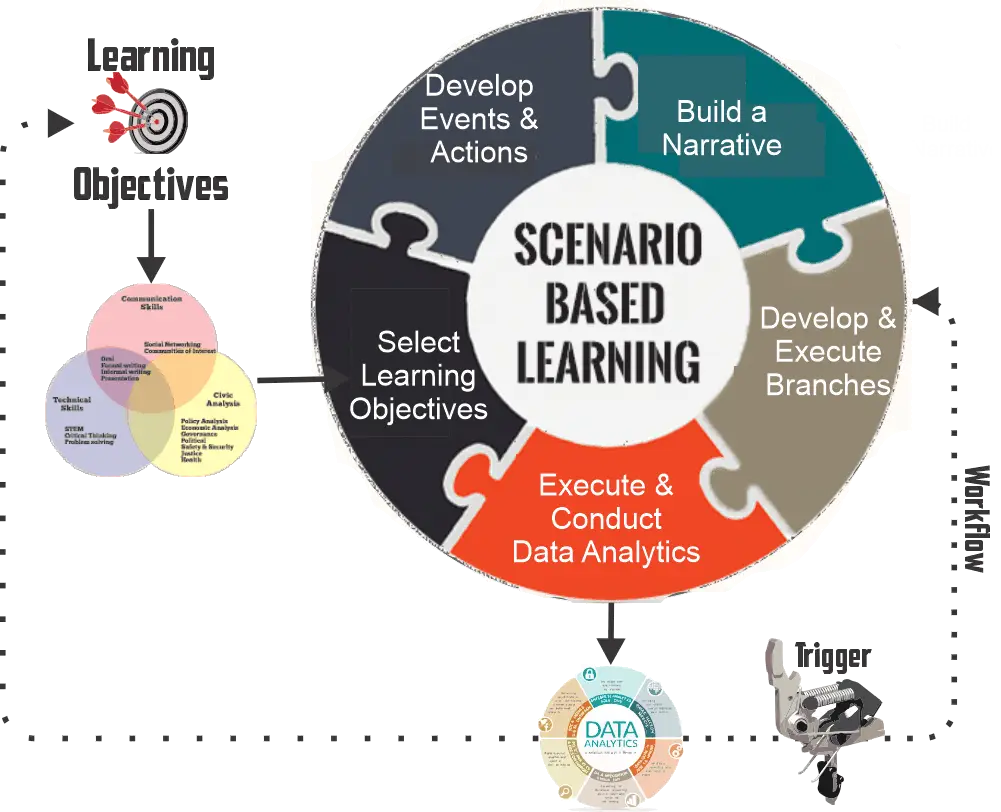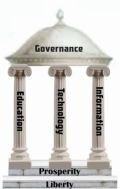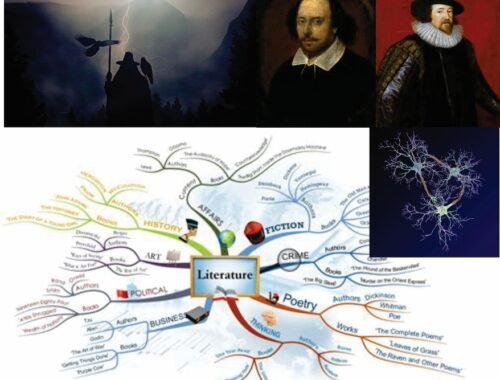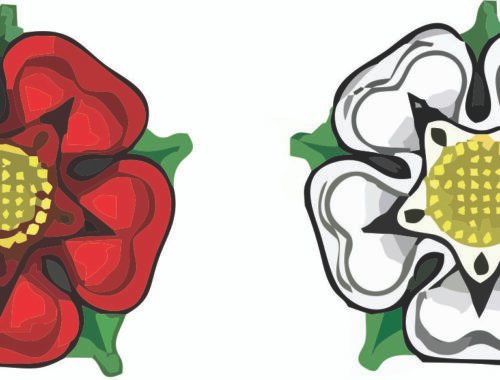
Educating Citizens versus Sheep, Part 6: Scenario-Based Learning
“Scenario-based learning (SBL) is an immersive training environment where learners meet realistic work challenges and get realistic feedback as they progress, since everything that happens reflects the learner’s choices.
Unlike many e-courses, where learners passively absorb information by reading a text and taking a test afterward, in scenario-based training, they actively participate in the process from the very beginning to the end of the lesson.” Helga Kolinski and James Gilchrest
Kolinski’s and Gilchrest’s comment in the opening quote is spot on. However, it fails to include the integrated nature of SBL and serious games. SBL without a serious game driving it is not effective. Serious games without scenarios are like a car without a driver.
The SBL is not a game engine. Organizations can employ SBL without a single computer. A case study, for example, can be a form of SBL, depending on its structure. Serious games significantly extend SBL’s capabilities, especially if married to a Learning Enablement System (LES) and data management/analytics capability.
A sound LES helps assess student capabilities, progress, and game effectiveness. A LES more than a traditional Learning Management System (LMS). The lES helps the student to interact with the learning system and games. It can determine the student’s capabilities and capacity to understand new information and to generate knowledge.
The LES should track and assess student cognitive capabilities and to tweak scenarios by ramping up exogenous cognitive loads that make it more challenging for students to sort through distractions to get to the key information and events in the scenario. This is different than the branches shown in the figure above. The core scenario is the same, it just more difficult and can lead to different branches. It also allows students to play the same scenario multiple times and see different outcomes depending on complexity.
The other thing both serious games and SBL need is a data management/analytics capability. Most game engines will have data management capabilities. However, we want the data management capabilities to have analytical capabilities, to interact with the SBL and a LES to manage the scenarios and the triggers for branches and to track student and team performance. Ideally, there is a single data management/analytics for a school or even a district to provide a student passport that tracks the student through graduation.
If the scenarios are well-designed, they can also help students uncover their cognitive biases and develop skills to understand and manage them. Branches can help them to see the impacts of these biases.
The central wheel in the figure above provides the key components of SBL
- Select Learning Objectives and Interfaces. Ideally, designers develop and maintain learning objectives separately so that educators and game designers can use them in multiple scenarios. The interface between learning objectives and the scenario should specify the learning interfaces the scenario will use.
- Develop Events & Actions. Marsh (2010, p.219) provides key concepts into how objectives should drive a story and its events. The actions and events provide the means to engage the learning objectives and interfaces and to evaluate them. The execution creates data that then flows into data analytics.
- Build a narrative. The narrative is a storyline with characters, challenges, and problems. Players engage the characters and negotiate the challenges and problems that are based on the events and actions. The narrative needs to be informative and engaging to encourage learning. Designers should tailor it to the cognitive capabilities and capacity of the learning audience. Scenarios with low cognitively developed learners should be straightforward, with little or no exogenous cognitive load and lower lever cognitive learning objectives. As the learning audience’s cognitive development increases, the scenarios may have larger exogenous cognitive loads to help make the challenges and problems more difficult. Learning objectives may also increase up the cognitive chain.
- Develop Branches. Branches allow the learner to move to different learning objectives within a game. They are like an exist ramp on a highway, activated by the trigger shown in the figure above. Data analytics should establish trigger points for a branch activation. In a digital component, the workflow could tell the game engine to start the branch and the associated information and actions. In an analog component, the workflow could alert the teacher and/or mentors to start the branch and provide players with new information required to them to explore the branch.
- Execute & Conduct Data Analytics. Serrano-Laguna et al. (2016, p5) provide a structure for event and action data to flow into data analytics. Designers must instrument the events and actions to capture the data needed for assessment. The assessments help to determine scenario branches to engage and evaluate performance and progress. If the game moves into AI/ML capabilities, data analytics will become more important, and the analytical sophistication will need to grow.
Follow on posts will go into additional details.
References
Scenario Based Development (p. 2012). (2012).
7 Examples on Scenario Based Learning (SBL) for Formal and Informal Learning.pdf. (n.d.).
Bertel, L. B., Kolmos, A., & Boelt, A. M. (2021). Emerging PBL Futures: Exploring Normative Scenario Development as an approach to support Transformation in Problem-based Learning and Higher Education Lykke Brogaard Bertel, Anette Kolmos, Anders Melbye Boelt *. Journal of Problem Based Learning in Higher Education, 9(1), 200–216.
Breakey, K. M., Levin, D., Miller, I., & Hentges, K. E. (2008). The use of scenario-based-learning interactive software to create custom virtual laboratory scenarios for teaching genetics. Genetics, 179(3), 1151–1155. https://doi.org/10.1534/genetics.108.090381
Das, S. (2021). Branching Scenarios In eLearning Appraising Critical Thinking.pdf. https/elearningindustry.com/branching-scenarios-in-elearning-appraising-critical-thinking
Editor, C. (n.d.). Aayushi International Interdisciplinary Teaching and Learning through Technology.
Gagnon, R. (2020). Using Your eLearning Tool Solution To Create Engaging Scenario-Based Learning Experiences.pdf. https://elearningindustry.com/elearning-tool-solution-create-engaging-scenario-based-learning-experiences
Good, J., Howland, K., & Thackray, L. (2008). Problem-based learning spanning real and virtual words: a case study in Second Life. Alt-J, 16(3), 163–172. https://doi.org/10.1080/09687760802526681
Grubbström, R. W., Merkuryeva, G., Bikovska, J., & Weber, J. (2005). ILMG game: Learning arrangements and simulation scenarios. Simulation in Wider Europe – 19th European Conference on Modelling and Simulation, ECMS 2005, 715–720.
Herzog, M., & Katzlinger, E. (2011). Influence of Learning Styles on the Acceptance of Game Based Learning in Higher Education: Experiences with a Role Playing Simulation Game. The European Conference on Games Based Learning.
Hidayatno, A., Moeis, A. O., & Raditya, R. (2014). Development of Simulation Game for Teaching Strategic and Operational Aspect of Production System. Proceeding of the 2014 International Conference on Industrial Engineering and Operations Management, 1316–1321. http://ieomsociety.org/ieom2014/pdfs/293.pdf
Hursen, C., & Fasli, F. G. (2017). Investigating the efficiency of scenario based learning and reflective learning approaches in teacher education. European Journal of Contemporary Education, 6(2), 264–279. https://doi.org/10.13187/ejced.2017.2.264
Khasnis, B. Y. (2021). Teaching and Learning through Technology. Aayushi International Interdisciplinary Research Journal (AIIRJ), Special Issue No 87, 31–35.
Magerko, B., & Laird, J. (2002). Towards building an interactive, scenario-based training simulator. Ann Arbor, 1001(May 2002), 48109. http://lmc.gatech.edu/~bmagerko6/papers/11TH-CGF-058.pdf
Muhamad, M., Zaman, H. B., & Ahmad, A. (2012). Virtual Biology Laboratory (VLab-Bio): Scenario-Based Learning Approach. Procedia – Social and Behavioral Sciences, 69(Iceepsy), 162–168. https://doi.org/10.1016/j.sbspro.2012.11.395
Olah, Z. (2020). 12 (sm)ART Storytelling Lenses For Any Scenario.pdf. https://elearningindustry.com/art-storytelling-lenses-scenarios
Pandey, A. (2020). 6 Smart Approaches To Bring Real-World Experiences To Online Training With Scenario-Based Learning.pdf. https://elearningindustry.com/how-bring-real-world-experiences-online-training-with-scenario-based-learning
Pappas, C. (2021). eLearning Storyboards.pdf. https://elearningindustry.com/tags/elearning-storyboard
Pappas, C. (2021). 8 Tips to Successfully Design Serious Games Based On Your Business Objectives.pdf. https://elearningindustry.com/tips-to-successfully-design-serious-games-based-on-business-objectives
Pappas, C. (2021). Everything eLearning Pros Need To Know About The Use Of Speculative Scenarios In Corporate eLearning.pdf. https://elearningindustry.com/speculative-scenarios-in-corporate-elearning-pros-need-know
Press, R. T. U., & Bikovska, J. (n.d.). Jana Bikovska DEVELOPMENT OF A SCENARIO-BASED APPROACH TO SIMULATION GAMES Summary of the Doctoral Thesis Doctoral Student of the Study Programme “ Information Technology ” DEVELOPMENT OF A SCENARIO-BASED APPROACH TO SIMULATION GAMES.
Press, R. T. U., Bikovska, J., Van Houten, S. P. A., Jacobs, P. H. M., Verbraeck, A., Hidayatno, A., Moeis, A. O., Raditya, R., Grubbström, R. W., Merkuryeva, G., Bikovska, J., Weber, J., Magerko, B., & Laird, J. (2005). An architecture for distributed simulation games. Proceedings – Winter Simulation Conference, 2(May 2002), 715–720. https://doi.org/10.1109/wsc.2004.1371573
Sailer, M., Stadler, M., Schultz-Pernice, F., Franke, U., Schöffmann, C., Paniotova, V., Husagic, L., & Fischer, F. (2021). Technology-related teaching skills and attitudes: Validation of a scenario-based self-assessment instrument for teachers. Computers in Human Behavior, 115(May 2020). https://doi.org/10.1016/j.chb.2020.106625
Slade, T. (2020). How to Create an eLearning Project Plan. In Tim Slade. https://timslade.com/blog/e-learning-project-plan/
Van Houten, S. P. A., & Jacobs, P. H. M. (2004). An architecture for distributed simulation games. Proceedings – Winter Simulation Conference, 2, 2081–2085. https://doi.org/10.1109/wsc.2004.1371573
Van Houten, S. P., & Verbraeck, A. (2006). Controlling simulation games through rule-based scenarios. Proceedings – Winter Simulation Conference, 2261–2269. https://doi.org/10.1109/WSC.2006.323051
Vojnovski, T. (2021). How Creative Storytelling Brings Interactive Scenario-Based Learning Experiences To Life.pdf. https://elearningindustry.com/how-creative-storytelling-brings-interactive-scenario-based-learning-experiences-to-life






One Comment
Pingback: